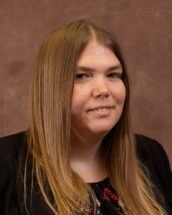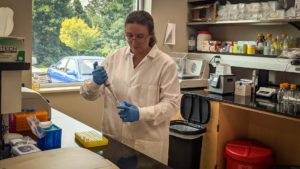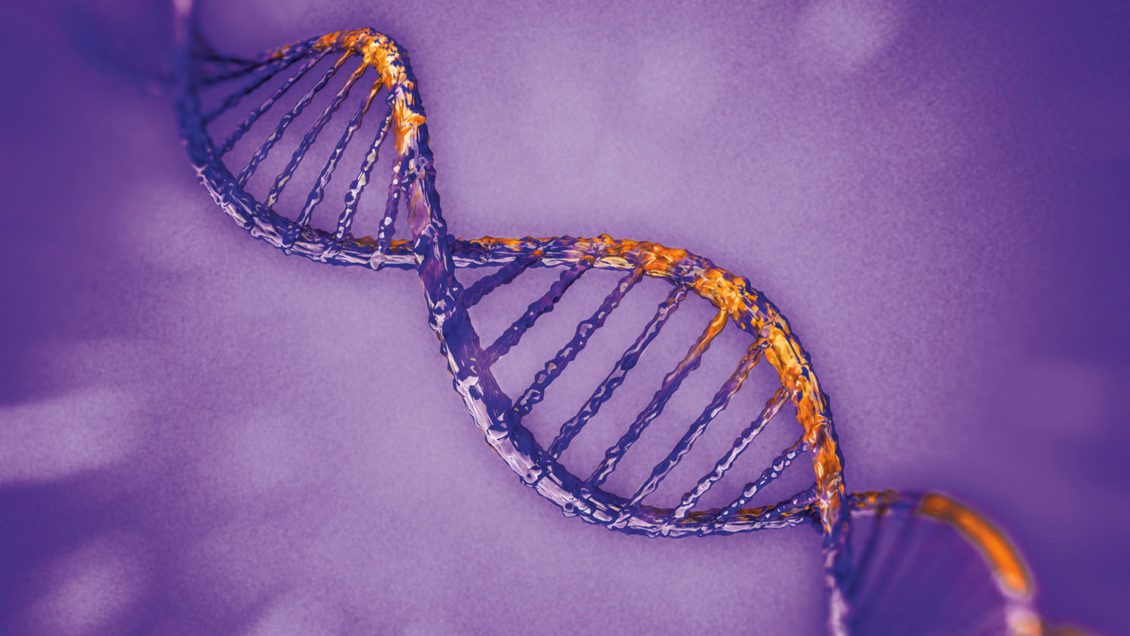Two Clemson research projects could further reveal DNA and RNA’s role
DNA, RNA and proteins are the building blocks of life.
DNA stores our genetic information. RNA converts that code into proteins that carry out cellular functions. But when something goes awry — either during DNA replication or RNA processing — it can lead to human disease.
Two Clemson University scientists received independent R35 grants from the National Institute of General Medical Sciences for research projects that will advance scientists’ understanding of how two specific mechanisms contribute to disease. Their resulting research could lay the groundwork for future therapeutics.
Jennifer Mason received a $1.848 million grant to study homologous recombination, a DNA repair pathway.
Lela Lackey received $1.837 million to study structure-based regulation of RNA.
Both Mason and Lackey are researchers in the Clemson University Center for Human Genetics and assistant professors in the College of Science’s Department of Genetics and Biochemistry.
Protecting DNA integrity during replication
Mason’s research involves homologous recombination, a DNA repair pathway. During replication, a cell copies its entire genome so that when it splits in two, each of the daughter cells contains all the genetic information. However, human DNA is prone to damage, either by naturally occurring processes or environmental factors such as exposure to sunlight. Scientists estimate that every cell in the human body is damaged at least 10,000 times per day.
“If your DNA is damaged, it will not copy correctly and you can get mutations. A cell’s inability to deal with damage is linked to a lot of different human diseases, including cancer,” Mason said.

Fortunately, human cells contain pathways that protect DNA during replication, repair damage and resume replication once cellular conditions have improved.
“The cell will slow down or stop copying its DNA to allow it to fix the problems, and once the conditions of the cell have improved, or the damage repaired, it will start replicating again,” Mason said.
Cells use homologous recombination to accurately repair double strand breaks in DNA, but scientists have discovered homologous recombination has roles during replication that do not involve double-strand breaks. Mason’s research will focus on those break-independent functions.
“The immediate impact of this research is we will increase knowledge about how these pathways protect our DNA during replication. Hopefully, by understanding how these pathways work, we’ll understand what happens when it’s not right and how mutations lead to human disease,” she said. “Ultimately, it could lead to the identification of novel therapeutic targets.”
Getting rid of what’s not needed
Lackey’s research focuses on RNA molecules and a process called splicing.
Information in DNA transfers to RNA through transcription. During transcription, a precursor mRNA is made from an exact copy of DNA.
However, before a mature mRNA molecule that can be translated into protein is made, the non-coding sections of DNA, or introns, have to be removed through splicing. Alternative splicing allows single genes to generate multiple mRNA and protein products. Alternative splicing is particularly important for higher eukaryotes, like humans.

Due to its flexible nature, RNA can fold and form complex and functional structures. Recent technological developments have identified RNA structures important for regulating RNA. Lackey’s research aims to understand what role structure has in directing RNA splicing. This is important because, if done incorrectly, splicing can lead to aberrant transcripts and many human diseases.
Splicing dysregulation underlies at least 15 percent of human diseases and is likely to contribute to many more.
“My research aims to help demystify the splicing code by clarifying the role of RNA structure in splicing,” she said. “Understanding RNA biology will better explain the underlying molecular mechanisms of disease and provide opportunities to develop new therapeutics. This award is for basic science research, but there are significant implications for human health.”
The College of Science pursues excellence in scientific discovery, learning and engagement that is both locally relevant and globally impactful. The life, physical and mathematical sciences converge to tackle some of tomorrow’s scientific challenges, and our faculty are preparing the next generation of leading scientists. The College of Science offers high-impact transformational experiences such as research, internships and study abroad to help prepare our graduates for top industries, graduate programs and health professions. clemson.edu/science
The Center for Human Genetics is part of Clemson University’s College of Science and is housed in Self Regional Hall, a state-of-the-art research facility located in Greenwood, South Carolina. Research in the center focuses on genomic, computational and comparative genetic approaches to gain insights in genetic and environmental risk factors for human diseases.
Get in touch and we will connect you with the author or another expert.
Or email us at news@clemson.edu

